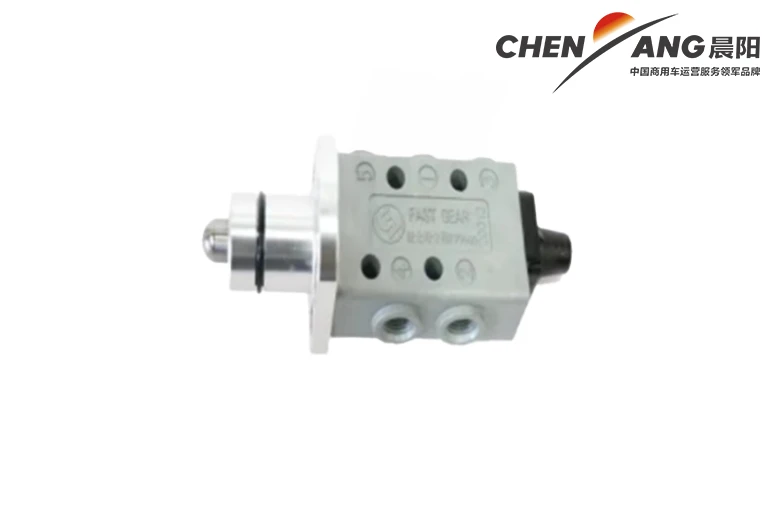transmission oil pan gasket
Understanding Transmission Oil Pan Gaskets Importance, Maintenance, and Replacement
The transmission system is one of the most crucial components of any vehicle. It plays a vital role in transferring power from the engine to the wheels, ensuring that your car operates smoothly and efficiently. A key element of this system is the transmission oil pan, and at the heart of this component lies the transmission oil pan gasket. This article examines the significance of the transmission oil pan gasket, its maintenance, and what to expect during replacement.
What is a Transmission Oil Pan Gasket?
The transmission oil pan gasket is a sealing component that sits between the transmission oil pan and the transmission casing. Its primary function is to prevent transmission fluid from leaking out while ensuring that the pan is securely fastened to the transmission unit. Made of materials such as rubber, silicone, or cork, the gasket is designed to withstand the heat and pressure that occur during vehicle operation.
Importance of the Transmission Oil Pan Gasket
The transmission oil pan gasket is critical for several reasons
1. Fluid Retention Transmission fluid is essential for lubricating the moving parts within the transmission, cooling the system, and ensuring smooth gear shifts. A damaged or worn gasket can lead to leaks, resulting in low fluid levels that could cause severe transmission damage.
2. System Performance A healthy transmission relies on maintaining the right fluid levels and pressure. A leaking gasket can disrupt this balance, leading to erratic transmission behavior, slipping gears, or even total transmission failure.
3. Cost Efficiency Addressing issues with the gasket early can save money in the long run. Ignoring minor leaks may lead to more severe transmission problems that require costly repairs or even a complete rebuild.
Common Signs of a Failing Transmission Oil Pan Gasket
Several warning signs can indicate that your transmission oil pan gasket is failing
- Transmission Fluid Leaks Puddles or spots of red or brown fluid under your vehicle are often the first signs of a leaking gasket. Ensure to check the fluid level regularly and monitor for any changes in color or texture.
- Overheating Transmission Insufficient transmission fluid due to a leak can cause the system to overheat. If you notice that the transmission is running hotter than usual, it might be time to investigate further.
- Unusual Sounds Grinding or whining noises from the transmission are often indicative of fluid issues
. If the gasket is leaking, the transmission may not be operating at optimal levels, causing these unusual sounds.transmission oil pan gasket

Maintaining the Transmission Oil Pan Gasket
While gaskets do wear out over time, regular maintenance can help ensure the longevity of your transmission oil pan gasket
1. Routine Flushes Performing regular transmission fluid flushes, as recommended by your vehicle manufacturer, can help keep the transmission system clean and free from contaminants that could degrade the gasket.
2. Visual Inspections Regularly inspect the transmission oil pan and surrounding areas for any signs of fluid leaks. Catching these early can prevent further damage and costly repairs.
3. Temperature Monitoring Keep an eye on your vehicle’s temperature gauge. If the transmission consistently runs hot, it could indicate a fluid issue, including leaks from the gasket.
Replacing the Transmission Oil Pan Gasket
If you identify a failing transmission oil pan gasket, timely replacement is crucial. Here’s what you can expect during the replacement process
1. Diagnosis A professional mechanic will start by diagnosing the leakage source, confirming it is indeed the gasket.
2. Fluid Drain The mechanic will drain the transmission fluid, making it easier and cleaner to work on the gasket.
3. Gasket Removal and Replacement The old gasket will be removed, and the new gasket will be installed. It’s essential to ensure that the surfaces are clean and free of debris for a proper seal.
4. Fluid Refill and Testing Once the new gasket is in place, the mechanic will refill the transmission fluid and perform tests to ensure that everything functions correctly and that there are no leaks.
Conclusion
The transmission oil pan gasket plays a vital role in maintaining the health and performance of your vehicle’s transmission system. Understanding its functions, monitoring for signs of failure, and ensuring timely maintenance and replacement can help you avoid catastrophic transmission issues and keep your vehicle running smoothly. Whether you’re a seasoned car enthusiast or a new driver, paying attention to the small details can make a world of difference in your vehicle’s longevity and performance.
-
Fast Gearbox Transmission Parts Slave Valve – Durable & Reliable SolutionNewsJul.28,2025
-
Hydraulic Lock Assembly for SHACMAN Truck Parts – Durable & ReliableNewsJul.28,2025
-
SINOTRUK HOWO 84 Electric Dump Truck for Eco-Friendly Heavy HaulingNewsJul.26,2025
-
The Fast 16-Gear Manual Transmission Assembly for Heavy TrucksNewsJul.25,2025
-
Mercedes Benz Actros 1848 42 Tractor Truck for Sale - Reliable PerformanceNewsJul.24,2025
-
High-Quality Water Pump Assembly for Sinotruk Trucks – Durable & ReliableNewsJul.23,2025
Popular products

























